Vo Van Kiet Highway, originally called the East-West Highway, is the most modern road running through downtown Ho Chi Minh City in an east-west direction. This is a strategic route which helps promote the economic development in Ho Chi Minh City in particular and the entire southern region, southern central and Tay Nguyen (the Central Highlands) in general.
The East-West Highway project started in 1997 and the opening to traffic in the first phase was completed in September 1999. This project has a total investment of 9.864 trillion VND, including 6.394 trillion VND from the Japan Bank for International Co-operation (JBIC) and 3.470 trillion VND from the State’s reciprocal investment. In May 2010, about 3.600 trillion VND was added to the project’s capital source due to the expansion of the route running through District 2, thus increasing the total investment to over 13.400 trillion VND.
The highway is a strategic transport route of a city which will have a population of approximately 10 million people in the near future. Now, the time to travel from the east to the west of the city has been reduced by 20-25 minutes due to the ease of traffic congestion. The highway also helps reduce the population density in the city because the residential areas have expanded to the eastern bank of the Sai Gon River and the south of the city. Furthermore, the highway has contributed to improving the environment and bringing a beautiful look to the city. This is shown in the fact that the slums of thousands of households on both sides of the Tau Hu-Ben Nghe canal are being replaced by parks with green trees and modern public facilities. More importantly, these households will have better houses and a more civilized living environment in the new resettlement areas.
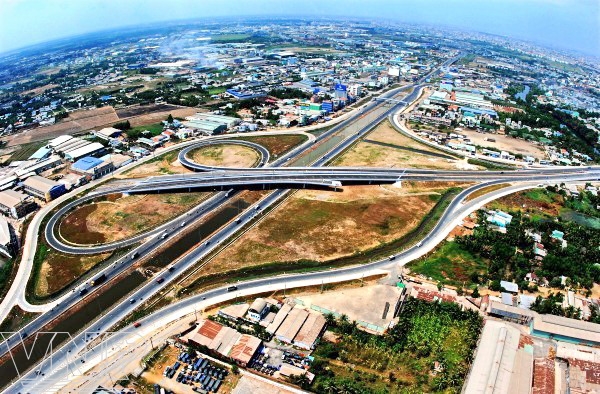
An aerial view of Vo Van Kiet Highway. Photo: File
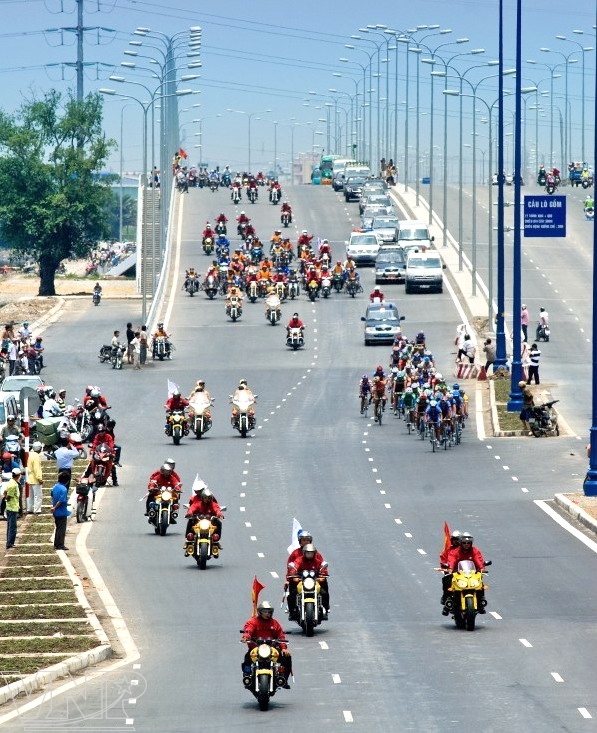
A bicycle-race on Vo Van Kiet Highway to celebrate the national unification anniversary of April 30. Photo: File
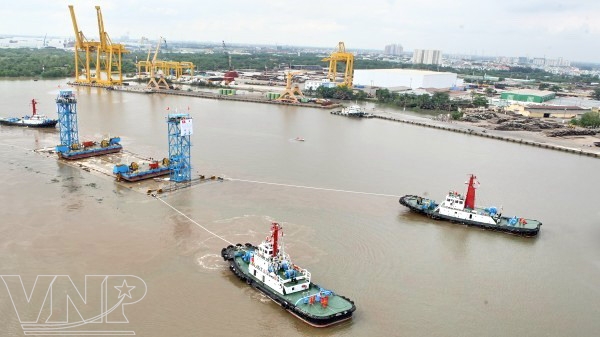
A segment of the tunnel is tugged to its position in the construction of the under-river tunnel of the Sai Gon River.
Photo: Le Minh
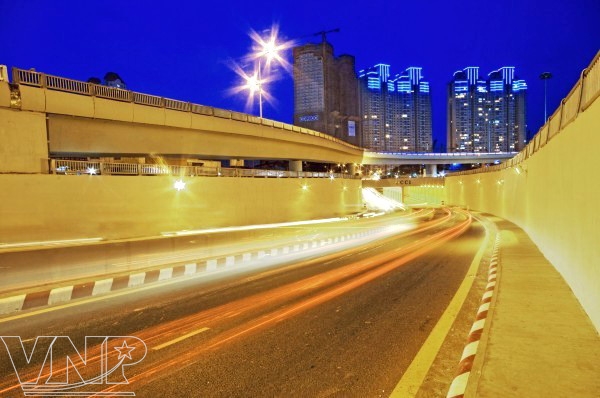
A stretch of the tunnel through Binh Thanh District. Photo: File
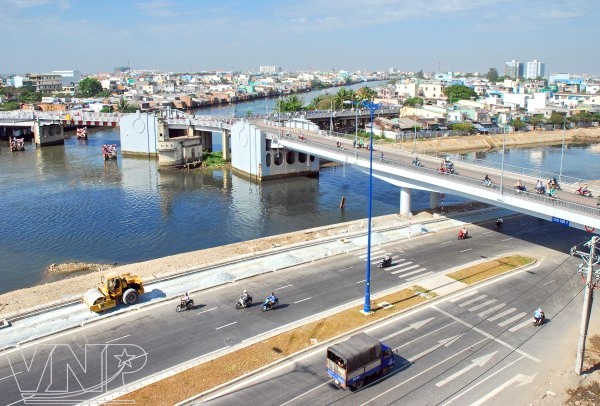
The new bridge facilitates the road and water traffic. Photo: File

Vo Van Kiet Highway contributes to creating a new face for Ho Chi Minh City. Photo: File |
The East-West Highway marks the strong growth of the transport construction sector in Vietnam. One of the most important imprints of this project is the construction of the Thu Thiem Tunnel under the Sai Gon River. This is the most difficult and complicated part of the project. The tunnel is about 1.49km long, 33m wide and 9m high. It has six lanes, three in each direction, for automobiles and motorcycles, with two emergency lanes. The tunnel consists of 4 sections. Each is 93m long, weighs 25,000 tonnes, and is made of 1.2m-thick waterproof reinforced concrete. The designed speed limit is 60km/h. The designed operational life of the project is 100 years. Currently, there are over 30 tunnels of this type in the world, commonly seen in Japan, Hong Kong, Shanghai, Australia, the US and the UK. Vietnam is the first country in Southeast Asia to build this type of tunnel. So far the project’s contractors have completed about 95% of the project. The Thu Thiem Tunnel is expected to technically open to traffic in October 2011.
When completed, the highway will link Ho Chi Minh City with the provinces in the Cuu Long River delta, the southeast, Tay Nguyen and the central region and will contribute to the economic development of Ho Chi Minh City in particular and the provinces in general.
On April 29, 2011, the East-West Highway was officially named Vo Van Kiet Highway. It has a total length of 13.2km, stretching from the intersection of Ham Nghi and Ton Duc Thang Streets on the western bank of the Sai Gon River (District 1) to the overpass of Highway 1 in Binh Chanh District. Speaking at the ceremony to rename the East-West Highway, Nguyen Thanh Tai, permanent Vice Chairman of Ho Chi Minh City People’s Committee, said: “When he was alive, Prime Minister Vo Van Kiet was very interested in the East-West Highway project. He mulled over and directed the strategies, solutions, and breakthrough projects to develop the city together with the growth of the whole country. The renaming of the highway today shows the love of the city residents for the late Prime Minister who has made great contributions to the revolutionary cause of the Party and nation, especially to the sustainable development of Ho Chi Minh City.”
Story: Thinh Phat - Photo: Le Minh – Files of the Management Board of Investment in Urban Traffic Works in Ho Chi Minh City
Story: Thinh Phat - Photo: Le Minh – Files of the Management Board of Investment in Urban Traffic Works in Ho Chi Minh City